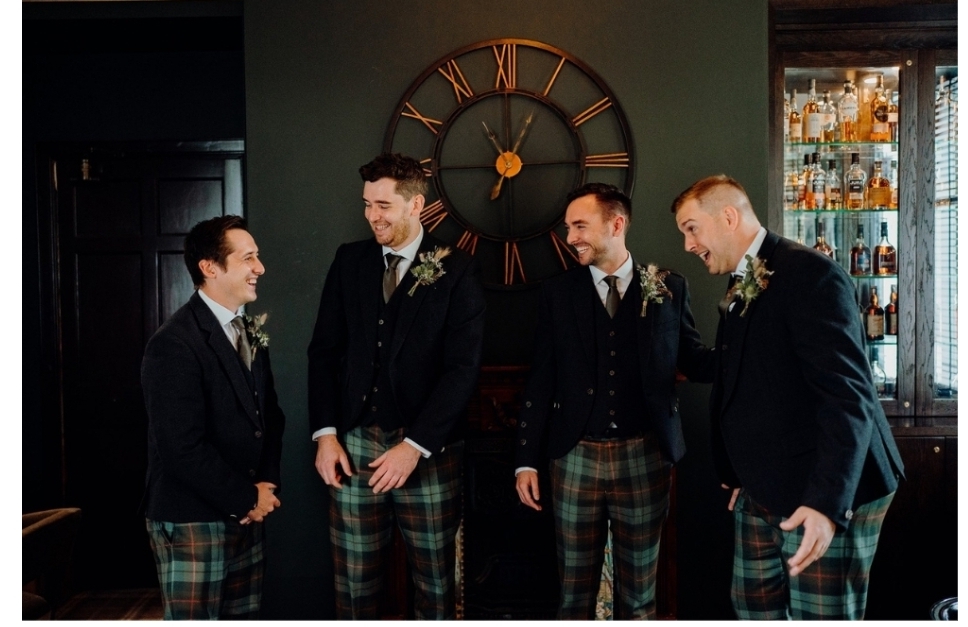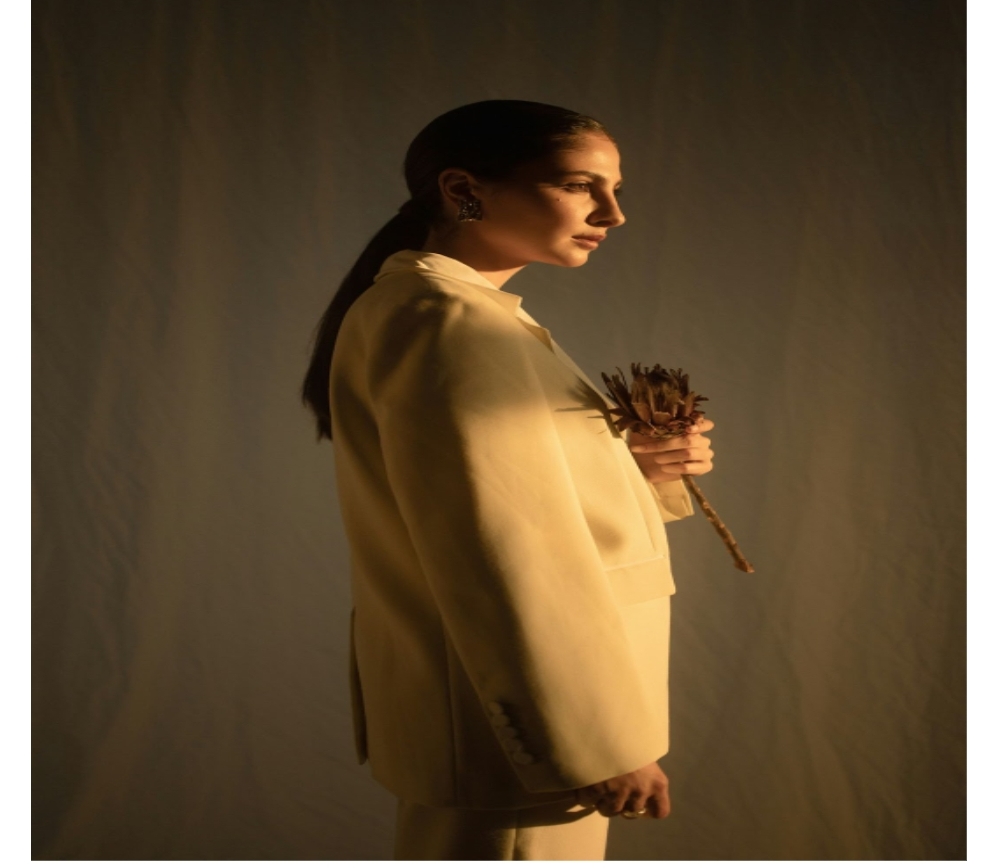Tartan Trews in Scottish Culture | Tradition, Identity & Heritage

Tartan trews have a rich history deeply rooted in Scottish Highland culture. Their origins can be traced back centuries, where they emerged as a practical and versatile garment worn by men in the rugged terrain of the Scottish Highlands. Initially, trews were made from woolen fabric and designed to fit closely to the legs and hips, providing warmth and protection from the elements. Over time, they evolved from everyday attire into a symbol of status and identity, particularly among the clans of Scotland. Tartan trews became intricately linked with the broader tradition of tartan, reflecting the unique patterns and colors associated with specific clans, families, and regions. As Highland dress gained popularity in the 19th century, tartan trews became increasingly standardized and formalized, cementing their place as an iconic element of Scottish cultural heritage.
Design & Construction of Tartan Trews
Tartan trews are meticulously designed and constructed to adhere to traditional Scottish tailoring techniques while also meeting modern standards of comfort and style. The design of trews typically features a form-fitting silhouette that contours to the legs and hips, creating a streamlined and flattering appearance. They are often made from high-quality wool or tartan fabric, chosen for its durability, warmth, and distinctive aesthetic. Tailoring techniques such as pleating, shaping, and stitching are used to ensure that trews fit snugly without restricting movement. Additionally, details such as waistbands, pockets, and closures are carefully crafted to enhance both the functionality and visual appeal of the garment. Each pair of tartan trews is a testament to the skill and craftsmanship of Scottish tailors, reflecting a long tradition of excellence in textile production.
Tartan Patterns & Symbolism
The patterns found in tartan fabric hold profound significance in Scottish culture, serving as visual identifiers of clan affiliation, family lineage, and regional heritage. Each tartan pattern consists of intersecting lines of various colors, carefully arranged to create distinct motifs and designs. These patterns are often associated with specific clans, whose members proudly wear their tartan as a symbol of shared ancestry and allegiance. Tartan patterns may also be linked to geographical regions, with certain designs representing the landscapes and natural elements of Scotland’s diverse terrain. The colors used in tartan fabric carry symbolic meanings as well, with shades of red, green, blue, and yellow often representing themes such as strength, prosperity, and loyalty. As such, tartan patterns serve not only as decorative motifs but also as powerful symbols of identity, heritage, and cultural pride for Scots around the world.
Traditional Uses of Tartan Trews
Historically, tartan trews were worn for a variety of purposes in Scottish Highland society. They served as practical attire for everyday activities such as farming, hunting, and traveling, providing protection from the harsh Highland climate while allowing for ease of movement. Trews were also worn on formal occasions and ceremonial events, where they symbolized the wearer’s status, rank, and clan affiliation. For example, Highland warriors would don trews as part of their battle dress, displaying their clan tartan as a mark of pride and solidarity. Similarly, trews were commonly worn at weddings, clan gatherings, and other social gatherings, where they played a central role in traditional Highland dress. Today, tartan trews continue to be worn for both practical and ceremonial purposes, preserving a centuries-old tradition of Scottish craftsmanship and cultural heritage.
Modern Adaptations of Tartan Trews
While tartan trews have deep roots in Scottish tradition, they have also evolved to reflect contemporary fashion trends and styles. In recent years, there has been a resurgence of interest in tartan patterns and Highland dress, leading to a renewed appreciation for trews as a fashionable garment. Modern adaptations of tartan trews often feature updated silhouettes, fabrics, and finishes, catering to the preferences of today’s consumers. For example, slim-fit trews made from lightweight materials offer a more streamlined and modern look, ideal for casual wear or semi-formal occasions. Tartan trews are also increasingly embraced as a statement piece in formalwear, adding a touch of Scottish flair to weddings, parties, and other special events. Designers and fashion brands have embraced tartan as a versatile and timeless motif, incorporating it into their collections in innovative and unexpected ways. As a result, tartan trews continue to captivate audiences worldwide, serving as a symbol of Scottish identity and style on the global stage.
Cultural Significance of Tartan Trews
Tartan trews hold immense cultural significance in Scottish society, representing a tangible link to the country’s rich history, heritage, and traditions. As a symbol of clan affiliation and regional identity, trews evoke a sense of pride, belonging, and solidarity among Scots around the world. They serve as a visual reminder of Scotland’s unique cultural heritage and its enduring legacy of craftsmanship and creativity. Beyond their aesthetic appeal, tartan trews also play a vital role in preserving and promoting Scottish customs and values, fostering a sense of community and shared identity among Scots of all backgrounds. Whether worn for ceremonial purposes, social gatherings, or everyday wear, tartan trews serve as a powerful expression of Scottish pride and resilience, transcending borders and generations to unite people in celebration of their shared heritage.
Regional Variations of Tartan Trews
The myriad of tartan patterns found throughout Scotland embodies the nation’s rich cultural heritage and intricate history. Each tartan tells a story, symbolizing the distinct traits and values of its clan or region. Scottish Kilt, boasting over 1400 variants, offers a mesmerizing array of regional variations in tartan trews, providing a window into Scotland’s diverse landscape and cultural influences. Whether from the rugged Highlands or the gentle Lowlands, each pair of trews captures the essence of its surroundings. Highland trews feature bold, earthy tones and intricate designs inspired by the region’s majestic terrain, while those from the Lowlands showcase softer hues and simpler patterns mirroring the tranquil landscapes and agrarian traditions. Even Scotland’s bustling urban centers like Edinburgh and Glasgow have their own tartan identities, paying homage to the dynamic culture and history of these vibrant cities. By embracing these regional distinctions, tartan trews honor the multifaceted nature of Scottish identity, encouraging wearers to take pride in their heritage.
Rituals & Ceremonies Featuring Tartan Trews
Tartan trews play a central role in numerous rituals and ceremonies that are deeply ingrained in Scottish culture and tradition. From weddings and christenings to clan gatherings and Highland games, trews are often worn to mark significant milestones and celebrate important occasions. At weddings, for example, groomsmen may don tartan trews as part of their formal attire, paying homage to the couple’s Scottish heritage and adding a touch of elegance to the proceedings. Similarly, at clan gatherings and Highland games, participants don trews adorned with their clan tartan, proudly displaying their allegiance and camaraderie. Military ceremonies also feature tartan trews as part of regimental dress, symbolizing the valor and loyalty of Scotland’s armed forces. Regardless of the occasion, trews serve as a visual reminder of Scotland’s enduring traditions and the bonds that unite its people across time and space. As such, they are cherished not only for their aesthetic beauty but also for their role in preserving and perpetuating Scottish customs and values for future generations.
Conclusion
In conclusion, tartan trews are more than just a garment; they are a symbol of Scotland’s rich cultural heritage, identity, and pride. With a history dating back centuries, trews have played a central role in Scottish Highland dress, serving as both practical attire and a symbol of clan affiliation and regional identity. Today, tartan trews continue to captivate audiences worldwide, reflecting the enduring appeal of Scottish craftsmanship and creativity. Whether worn for ceremonial purposes, social gatherings, or everyday wear, trews evoke a sense of pride, belonging, and solidarity among Scots of all backgrounds. As a symbol of tradition, resilience, and cultural continuity, tartan trews serve as a powerful reminder of Scotland’s unique place in the world, uniting people in celebration of their shared heritage and values. By embracing and preserving this cherished tradition, we honor the legacy of our ancestors and ensure that tartan trews remain an enduring symbol of Scottish pride for generations to come.



